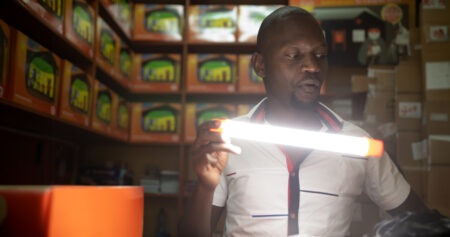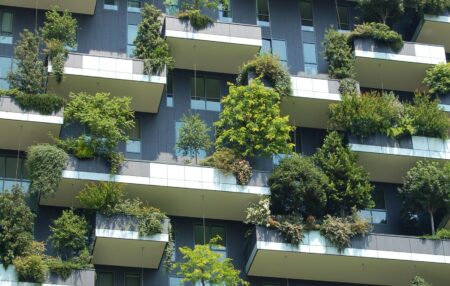Tanzania’s government via the President’s Office Ministry of Regional Administration and Local Government (PO-RALG) with support from World Bank and UK aid as financier, has funded the Tanzania Urban Resilience Program that brought, Msimbazi Opportunity Plan.
This is the comprehensive blueprint, turning the commercial city hazardous basin into a valuable real estate asset for urban resilience.
The entire process was rooted by Tanzania’s Vice President Hon. Samia Suluhu’s quest for eliminating flooding in Dar es Salaam, resulting into a coherent participatory process to beget the Msimbazi Plan, known as “Charrette”, which began from January 2018 to August 2018. Over 200 people were involved from 59 institutions and communities.
Dar es Salaam, the commercial city with approximately 6 million people, has suffered enormously under floods over time and space, and Msimbazi Valley being the epicenter of vulnerability and stress to thousands of victims.
Msimbazi river and its tributaries flow through the heart of Dar es Salaam, which is growing fast with unplanned population estimated at 70 percent.
Msimbazi basin is 271 square kilometers, accommodating 27 percent of the city population, whereas the riverine areas in the lower section of it, bring severe damages to infrastructures, properties and livelihood occurs.
And yet, the basin is exotic with vast green spaces and water-flow, benefiting graze-land and fertile soil for urban-farming to the city. The basin proves to be vulnerable and costing millions under heavy rains, as the riverbed stays dry most times through the year, thus under rain the basin changes dramatically.
In April 2018 rains displaced thousands of people in Dar es Salaam, while December 2011 was the severe record which took 42 lives and displaced over 10,000 people, according to available data.
Redesigning of the basin would assume over $114 million as the cost for the project according to the project document of 2019. Thus, the entire landscape of the basin depends on the project to enhance urban resilience, primary in the most populous city in Tanzania.
Project Time-Frame
The short-term horizon for stage one of the Msimbazi Opportunity Plan is 2023, where between 2019 to 2023, the main task is improving the lower basin’s section which is ridden with widespread destruction, due to vulnerability.
The medium-term from 2024 to 2031, which is stage two and three involving engineering works and rehabilitation of the natural ecosystems to yield urban land-use development as desired by the project.
The long-term time horizon for the Msimbazi Opportunity Plan is set to 2050, whereby during that time intended interventions will be implemented and impacts realized. That means the creation of a balance and attaining lower flood risk as well as effective protection of the urban environment.
The entire project is set upon four main strategies that drive its success: mitigation plans to avert flooding severity, protection of people’s livelihoods and assets from flood exposure, the transformation of the hazardous basin into a city part with redeveloped surroundings and governing strategy that works upon planning and coordinating planned urbanization.
Building Urban Resilience
According to the World Bank, over the next 20 years, 95 percent of global urban growth will occur in developing and emerging countries. And yet, population growth projections of Tanzania National Bureau of Statistics (NBS) which stand a 3 percent, Msimbazi Basin could become the home of 2.5 million people in 2030, which is twice 2011 numbers.
Thus, the latter calls for a robust sustainable urbanization plan, that utilized available space effectively. Thus, the partnership between United Kingdom Department of International Development (DFID) and World Bank , provide the government of Tanzania with the relevant tools for building resilience in urban areas against climate and disaster.
The Tanzania Urban Resilience Programme stand to enhance resilience all cities in Tanzania, primarily with Dar es Salaam being the case with knowledge and skills within comprehensive frameworks in addressing needs and challenges within risk identification, risk reduction, and disaster preparedness and emergency management.
However, the programme opens pragmatic windows to benefit all cities, with knowledge, skills, and results in stimulating innovations and scaling up community-based activities.
Offering cities with higher risk, viable practical tools, and new investments. Most importantly, for Dar es Salaam, sparking transformative investment, via rehabilitation in the Msimbazi Valley and other flood-risk areas and strengthening emergency management.
According to Bank of Tanzania, 2019 quarterly (ending June 2019) economic bulletin, the real estate grew from 1.8 percent in 2018 to 2 percent in the first quarter 2019. In that context, profitable prospects stand to be drawn over time in the sector.
READ: Kenya’s real estate sector slumps
The Design
A city park will be established in the lower basin, creating valuable functional urban and public space, whereby wetlands and mangrove forests on flood plain produce breathtaking recreational service converging ‘green lung’ and ‘heart of the city’.
Wider spaces of the lower basin are landscaped for public functions of an open and green park, extending the urban development of prime real estate across the edges of the basin.
Further, 14,500 units are the capacity of the urban development, part of it (estimated 2500) being portioned to vacated populations from flood hazards. Remaining 12,000 will be developed into commercial housing for other citizens.
Project Cost and Projected Revenue
With drainage improvement and commercial development combined the detailed plan for the lower basin establishes a framework that coordinates investments from various sources, including government, private sector and development partners in restoring extremely-vulnerable flood plain in the strategic city into a profitable and valuable city asset.
Cost break down of the interventions in the basin, particularly for the lower section are approximately $ 55 million, and for the upper section $ 49 million. Related cost such as reforestation and sediment traps in upper areas in the lower basin over the long term are estimated to be at $ 10 million.
The preliminary vision of the lower basin engulfs a mix of 12,000 market-rate housing units and 2500 affordable housing units, which results in an additional 700,000m2 housing which will be erected upon a reclaimed urban land of 57 hectares which is flood resilient.
However, preliminary analysis display $ 900 million is projected as potential revenue in housing development. Space is could be offered for shops, malls, offices and parking garages, which is the only part of the expected economic benefits.
Available data on the project indicates that the cost recovery on capital expenditure would be acquired over a period of 12 years and at expected internal rate of return of 18 percent.
READ: Pan African real estate company Broll reaches for global partners










